Good horror usually keeps us on the edge of our seats, but in the occasional lull between one suspenseful scare and the next, you might find yourself wondering, "Why is this movie so famous?" Or maybe, “Where did this trope originate?"
Maybe you find yourself asking the bigger questions, like why you enjoy being scared, or what even makes a thing scary in the first place.
If these are the kinds of questions you're dying to see answered, try putting a hold on your next horror read or watch and picking up one of these horror literary criticism books instead.
From entertaining pop-culture histories of beloved horror films and biographies of the genre's biggest names to social-scientific analyses of why we enjoy a good scare, these books are sure to give you fascinating new insight into the genre you love to fear.
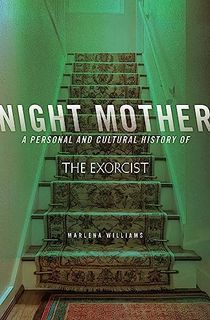
Night Mother: A Personal and Cultural History of The Exorcist (21st Century Essays)
When The Exorcist hit theaters in 1973, it was so scary it made moviegoers vomit and faint in the theater, and so graphic in its depiction of Satanic possession that it enraged Christian audiences nationwide.
Author Marlena Williams’ grandmother was among the many parents who forbid her daughter from watching it, and Williams’ mother did the same for her. Four decades later, Williams revisits the film through both personal and cultural lenses.
Williams explores The Exorcist as a projection of Americans’ worst fears in the turbulent 1970s, using it as a key to understanding her mother and the world she came from growing up Catholic in rural Oregon.
In this series of essays, Williams combines astute cultural criticism with vivid personal narrative, offering a stunning account of the film’s lasting impact on both wider American culture and the individual lives within it.

101 Horror Books to Read Before You're Murdered
Sadie “Mother Horror” Hartmann, co-owner of Night Worms book subscription service and editor-in-chief of Dark Hart Books, has been connecting readers with the best of modern horror for years.
Her book of recommendations brings you 101 modern horror gems to terrify, disgust, unsettle, and entertain you, including plenty of deep cuts. Some of them are as heartfelt as they are horrifying, while others will leave you sleeping with the lights on.
Each recommendation comes with a complete synopsis of the book as well as an overview of its themes, style, and tone, so you can get a better idea of which reads are right for you.
The book also features a forward by New York Times bestselling author Josh Malerman and five never-before-seen essays from rising stars in the genre.

Paperbacks from Hell
Acclaimed horror author and vintage paperback book collector Grady Hendryx invites you to journey back in time to an era where every new horror book was more outrageous than the next and every author was trying hard to write the next Exorcist or Rosemary’s Baby.
Hendryx walks you through the delightfully gaudy horror of the 1970s and 1980s, charting a course through two pivotal decades in the genre’s development to explain how it got to where it is today.
Dive into the repertoires of those contemporaries of V.C. Andrews and R.L. Stine who have been lost to time. Plus, read Hendryx’s recommendations for which are better off forgotten and which are worth checking out today.
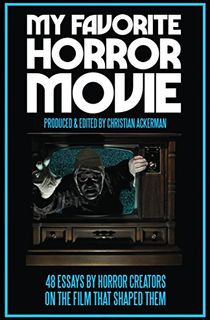
My Favorite Horror Movie: 48 Essays By Horror Creators On The Film That Shaped Them
Do you remember the first horror movie you ever saw? Or maybe it was the first one that got you into the genre, one that really spoke to—and terrified—you? These creatives sure can.
Edited by horror filmmaker Christian Ackerman, My Favorite Horror Movie asks an array of filmmakers, actors, painters, writers, journalists, and more to identify the horror movies that first sparked their enthusiasm for the genre and continue to inspire them today.
Films essayed range from the lovable 1940s classic Abbott and Costello Meet Frankenstein to genre-defining 1970s hits like The Exorcist and Halloween, to truly terrifying 1980s staples like A Nightmare on Elm Street and The Thing.
No matter the decade they were made, these movies left an indelible mark on the kids who went on to make their own—and probably scarred them for life, too.

Danse Macabre
Who better to tell the history of the horror genre than the King of Horror himself? In ten chapters, Stephen King takes readers through the most popular and pivotal works in horror from its inception until 1981, when Danse Macabre was written.
From gothic classics like Frankenstein and Dracula, to the the subtle, psychological terror of the Twilight Zone, to the Catholic lore and gore of The Exorcist, King offers witty and insightful commentary on how the genre has interacted with American culture and why it developed in the way it did.
Praised by the Philidelphia Inquirer as “one of the best books on American popular culture,” anyone looking for a deeper understanding of the horror genre is sure to love this book.

Why Horror Seduces
Have you ever wondered exactly why it is we love horror so much? After all, human instinct is usually to retreat from things that terrify us. So why do we love to gorge ourselves on horrifying demons, grisly murders, and psychological torment?
In Why Horror Seduces, Danish scholar of horror fiction Mathias Clasen answers all these questions and more.
Through the lens of evolutionary social science, Clasen demonstrates how the horror genre is a result of human nature. Like other forms of thrill-seeking, horror entertainment offers the promise of high-intensity experiences within a safe context that our brains desperately crave.
Clasen provides an in-depth look at the scientific and sociological explanations behind these processes.
If you’ve ever wanted to know just why it is we love to be scared out of our wits, Clasen’s book is for you.

Monster, She Wrote
Monster, She Wrote takes us beyond well-known icons like Mary Shelley and Shirley Jackson to offer readers the definitive guide to women in horror and speculative fiction. The authors include not only the women whose names have become synonymous with the genre itself, but lesser known voices like Victorian psychological horror writer Violet Padget, who was openly romantically involved with women in the era.
From the lesser-known science fiction epic of Margaret “Mad Madge” Cavendish, written over a century before Shelley’s Frankenstein, to the work of modern vanguards like Helen Oyeyemi, this book spotlights over 100 female authors and over 200 of their most spine-tingling stories to celebrate their pioneering and enduring role in the speculative fiction genre.
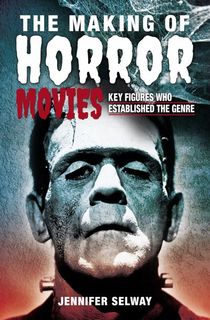
The Making of Horror Movies
The horror genre has long existed in contention with wider popular culture, both shaping it immensely and struggling to garner the same critical recognition as more “serious” genres.
Over the last several decades, however, starting with developments like The Exorcist’s Oscar nomination for Best Picture, that has begun to change.
In this illuminating book, TV critic Jennifer Selway analyzes the genre’s evolution in American popular culture through the lens of the directors and actors who came to define the genre.
She charts its rise to popularity and its splintering into numerous different subgenres, like psychological horror and slasher, offering biographical descriptions of the key figures along the way.

The Book of Horror
While Why Horror Seduces asks us why we love horror so much, The Book of Horror asks, “What makes a horror movie scary?”
What tactics do horror movies, across subgenres and time periods, consistently use to keep even the most grown-up of audiences checking for monsters under their beds or killers in their closets?
In each chapter, Glasby explores one seminal horror movie through the lens of several key scare-factor categories, charting the movie’s scariest scenes with infographics and recommending related works.
From Psycho (1960) to It Chapter Two (2019), Glasby examines 34 terrifying post-war horror movies, both famous and obscure, and references more than one hundred others.
Horror movie fans are sure to love Glasby’s guide to what makes scary movies, well, scary.

The Thrill of Repulsion
Through a combination of articles, interviews, and curated lists, horror film and literature professor Williams Burns takes a look at the evolution of horror across mediums, providing readers a truly comprehensive exploration of the genre’s increasingly established place in American popular culture.
The book is divided into four sections: Film, Television, Literature & Comic Books, and Music.
Within each section can be found the author’s own reflections, interviews with artists, and, most entertainingly, top-13 lists such as “13 Horror Movie Adaptations That Are Better Than the Book” and “The 13 Most Terrifying Horror Film Soundtracks.”
Fans of the darker corners of all artistic mediums, from heavy metal music to experimental cinema, will appreciate this book’s fresh approach to analysis of the genre’s most influential contributions.
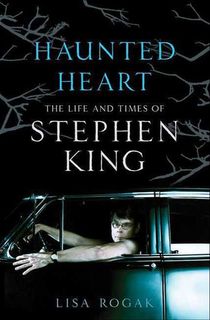
Haunted Heart
His name is everywhere in popular culture, but how much do you really know about the man behind horror’s most iconic books and films? This unauthorized biography reveals the troubled upbringing and lifelong fears that inspired King to produce horror classics like Carrie, It, The Shining, and many more.
From his itinerant childhood to his rapid emergence into horror and transition into broader popular culture, Lisa Rogak offers a fascinating look at one of the most prolific and successful authors of the 20th century.
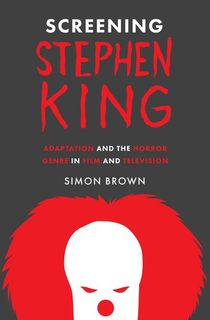
Screening Stephen King
Although Stephen King is one of the most significant authors in American pop culture, many young horror fans are introduced to King not through his books, but through their film adaptations. More than 100 film and TV adaptations have been made from King’s books, many of them going on to garner just as much critical and commercial success as the books that inspired them, cementing King’s name in both the literary and film canons of horror.
In Screening Stephen King, Simon Brown first examines the reasons for King’s literary success, then goes on to explain how his themes and style have been adapted for the silver screen, starting with Carrie and working his way through King’s repertoire.
Brown’s work is an insightful exploration of the post-war horror milieu that nurtured King’s success and King’s indelible impact on the genre in turn.
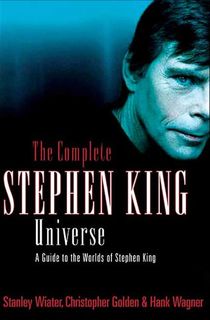
The Complete Stephen King Universe
It is a well-known piece of Stephen King trivia that many of his books take place in Maine, where he grew up and still lives part-time.
The Complete Stephen King Universe takes this curious connection a step further by examining the common threads that run through his novels, short stories, films, miniseries, and teleplays.
This definitive reference work on King includes detailed story analyses, character breakdowns, fun facts, and fascinating revelations on how the plots, themes, and characters intertwine, bringing King’s seemingly disparate works together into one cohesive—and terrifying—universe.
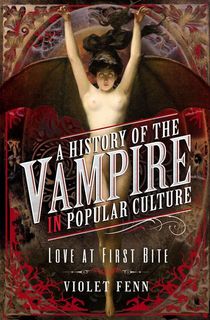
A History of the Vampire in Popular Culture
Dracula. Twilight. Interview With the Vampire. For decades, vampires have captured the popular imagination, from the blood-sucking villains that terrorized medieval villages to the sparkly bad-boys that are more likely to make audiences swoon than tremble with fear. So how did we get from there to here?
Violet Fenn charts the course of the vampire’s development in popular culture, from early “fact” and folklore to gothic literature to modern TV and film.
She takes readers on a definitive journey through the history of vampires, ultimately demonstrating that no matter how much popular portrayal of vampires has changed, one thing has always been true: vampires have always been sexy. Or, at least, vampirism has always been about sex. Whether you find Nosferatu sexy is up to you.

Household Horror
Marc Olivier takes the idea of a “haunted house” to a whole new level in this fascinating exploration of the household items at the center of our favorite horror movies.
From the microwave that killed a gremlin to the sewing machine that made Carrie’s dress, Olivier explores why horror movies imbue possessed objects with such power. He places objects on equal footing as human characters in horror films, arguing, for example, that The Exorcist is just as much about a possessed bed as a possessed girl.
Room by room, Olivier walks readers through fourteen household objects to demonstrate how, through the medium of horror movies, they take on special significance and tap into specific cultural fears and concerns.







